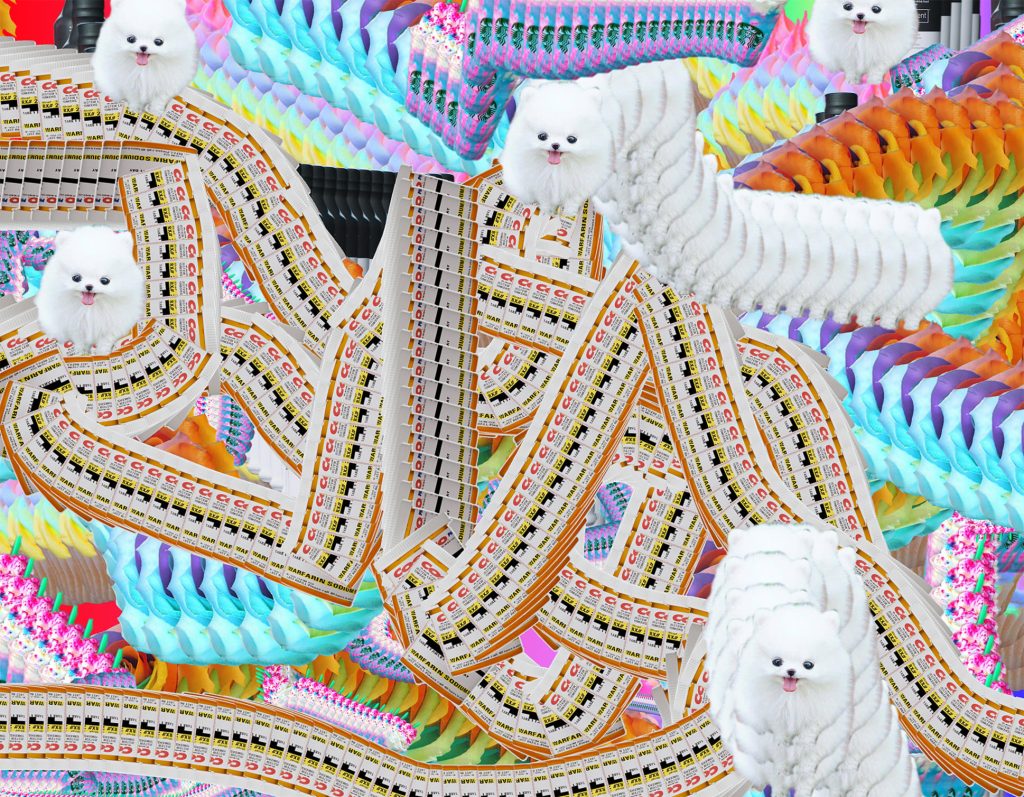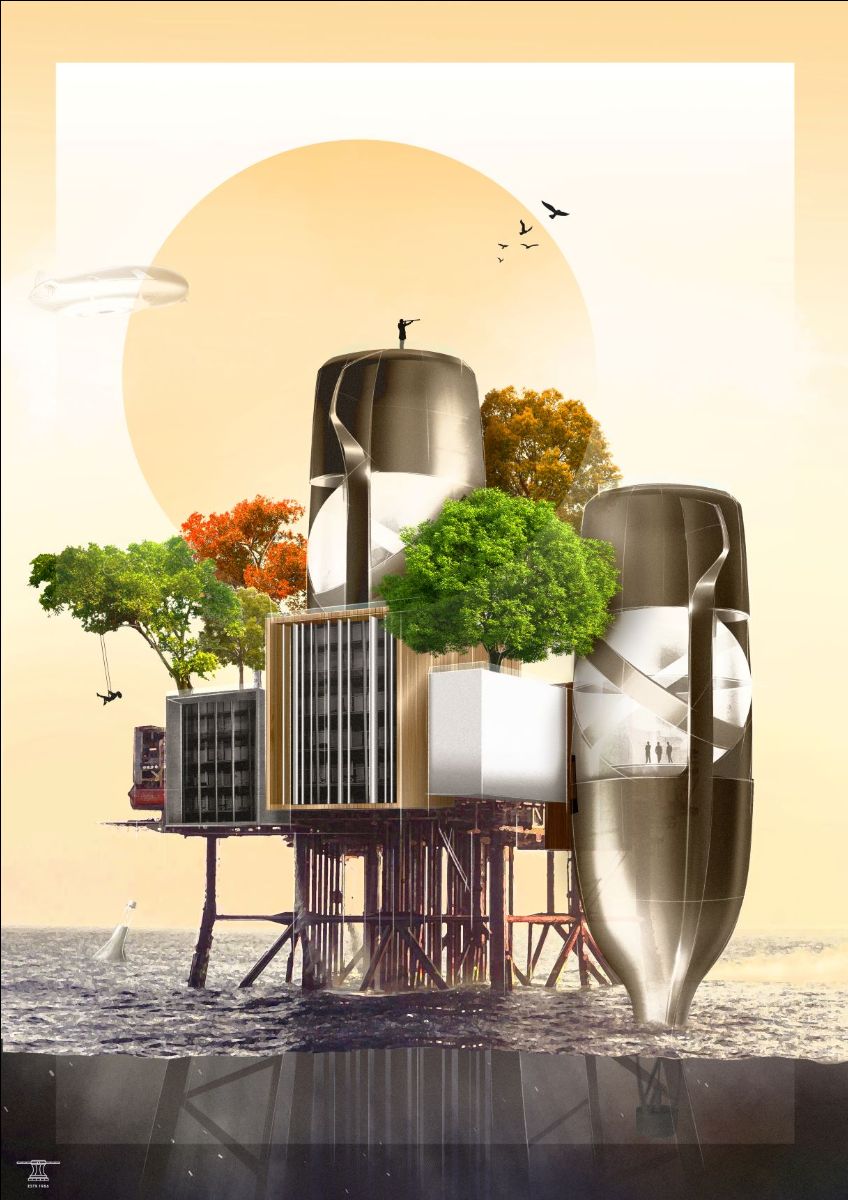Interactive experiences can change the rules of the game for any brand, giving them the ability to connect with their community in a meaningful and lasting way. Are they really a revolution or only the latest found in the fair of illusions and vanity?
Terms like NFT and Metaverse have become part of the common language and will gradually become more and more almost “ordinary” tools of a revolution that will have a significant impact on our habits, social and working relationships. Although at this time there is no “precise” legal framework for these new tools – in relation to their creation, marketing, use and resale, – as well as intellectual property and copyrights still to be regulated, there are many authors and brands that have presented and proposed their ideas, starting new businesses in advance, from smartphones to cars, from fashion to photography, from architecture to yachts.
Let’s start examining some cases that were interesting to our editorial staff in these spring months so particularly full of virtual ideas, probably again due to the pandemic and the new difficult global geopolitical situation. We can start with the sector closest to NFTs: the world of art. According to “The Art Basel and UBS Global Art Market Report”, the Art Market 2022 reveals strong recovery with return to live sales and events, while online sales continued to grow. The repor, including a survey examining the behaviors of high net worth (HNW) collectors, looks at the continued and varied effects of the global pandemic on various sectors of the art market last year. It also delves deeper into the topic NFTs for the first time and outlines the trends and outlook for 2022.
According to the report, following its biggest fall in sales in 10 years in 2020, the global art market – with leading markets represented by USA, China and UK – recovered strongly in 2021, with aggregate sales of art and antiques by dealers and auction houses reaching an estimated $65.1 billion, up 29% from 2020, with values also surpassing pre-pandemic levels in 2019. Outside the global art market’s turnover of $65.1 billion, sales of NFTs boomed on NFT platforms. The value of sales for art-related NFTs taking place outside of the art market expanded over hundred-fold in 2021 year-on-year reaching $2.6 billion, with even greater growth in collectibles, to $8.6 billion. The volume of transactions on these external NFT platforms also expanded rapidly growing from just over 755,760 in 2019 to 5.5 million, with collectibles heavily dominating the number of sales (85% of transactions in 2021). In 2021, 74% of HNW collectors surveyed by Arts Economics and UBS Investor Watch, had purchased art-based NFTs, with a median expenditure in this category of NFTs totaling $9,000 each.
NFT sales also entered the traditional art market’s auction sector in 2021, but at limited values thus far. Christie’s NFT sales totaled $150 million, including the landmark sale of Beeple’s Everydays: The First 5000 Days (2021) for $69.3 million in March. Sotheby’s NFT sales reached $80 million in 2021 – these were also among the most successful in attracting young and new buyers, with 78% of NFT bidders being new to Sotheby’s and more than half of them aged under 40.

Only 5% of second-tier auction houses surveyed had sold NFTs in 2021, although 28% were planning to do so in the next one to two years. Similarly, in the dealer sector, just 6% of the dealers surveyed had sold NFTs in 2021, with a further 19% interested in doing so in the next one to two years.

Forecasting behaviors and looking ahead to the next 12 months, the majority of HNW collectors (53%) were planning to buy art in 2022. A growing interest in digital art is evident, particularly with younger collectors, as over half of the HNW collectors surveyed (56%) reported that they were interested in buying digital art this year, the highest among millennial collectors (61%). There are also no signs that interest in NFTs will abate, with 88% of HNW collectors interested in purchasing NFT-based artworks in future. Both dealers and auction houses were optimistic about their sales prospects in 2022, with 62% of dealers and 81% of the second-tier auction houses expecting improving values in the coming year.

Let’s see how virtual NFTs become tangible and functional.In June 2022, to celebrate the brand’s 22nd anniversary, Luxury brand VERTU Paris partnered Binance to launch the new VERTU Constellation X Ulm smartphone through an exclusive sales process. 10,555 smartphones were available for sale via the purchase of an NFT. After purchasing an NFT, the 10,555 owners have until September 23, 2022 to choose whether to convert their NTF to the VERTU Constellation X ULM™ smartphone in order to receive it no later than February 2023, or if they decide to keep it as an NFT and thus become part of the new VERTU 3.0 business club bringing together the brand’s historical customers and the new web 3.0 community.
Each NFT holder will also have access to exclusive, private events that bring together the most influential and successful people on VERTU’s 300,000+ private buyer list and new VERTU3.0 Club members, as well as Hall of Famers (like Elon Musk, Stephen Joseph Squeri and other successful entrepreneurs).
Bulgari also entered the metaverse with a virtual Rome recreated in Unreal Engine 5, a concept that aims to celebrate the greatness of an ancient but futuristic city. The new metaverse concept for the Bulgari brand was presented by the newborn tech studio Experiency, part of the Spencer & Lewis communication group, on the occasion of VivaTech 2022 in Paris.
The high-end jewelry brand, part of the LVMH Group, has chosen to develop a proprietary metaversic platform as a clear indication of the brand’s future path. Developed together with the 101games team using Epic Games’ Unreal Engine 5, the virtual transposition of the concept presented by Experiency aims to celebrate the greatness of a futuristic Rome and its sunsets, while enhancing Bulgari’s classic stylistic features.
“As a luxury brand that has made the crossing of borders its DNA, continuously expanding the vision of our creative universe is intrinsic to our nature”, said Jean-Christophe Babin, CEO of Bulgari Group. “This is the beginning of a new journey that invites our customers to share, through the metaverse, an entirely new experience of luxury, inspired by our original values that have their roots in Italian excellence”.

“We are extremely happy that Bulgari has trusted us by entrusting us with the development of their metaverse concept”, commented Monica Magnoni and Geo Ceccarelli, founders of Experiency. “We immediately agreed with the Bulgari Innovation Team regarding the brand’s need to develop a proprietary platform, capable of emphasizing both aesthetics and experiential performance”. Raffaella Camera, Head of Brands of Epic’s Unreal Engine Games, added: “Interactive experiences can change the rules of the game for any brand, giving them the ability to connect with their community in a meaningful and lasting way. Unreal Engine 5 puts avant-garde realism and visual fidelity directly into the hands of creators such as to represent the ideal solution for the entire luxury market and we are particularly happy to be part of the path that Bulgari has chosen to undertake for the development of its new metaverse platform”.
Following the same method, that is creating a new community around a brand or digital ownership, Pelorus has created a series of member benefits for holders of Oceanco’s non-fungible tokens – NFT.
Experiential travel and yachting company Pelorus, has developed a series of ‘utilities’, or travel experiences, to enhance the launch of superyacht NFTs created by world-class yacht builders Oceanco and superyacht designer Timur Bozca.
Since its foundation, Pelorus has offered private adventures and yacht expeditions to the most awe-inspiring places on Earth, pushing the boundaries of exploration and experience. This pioneering drive has led them to explore the NFT space and commit to developing a suite of experiential benefits available to Oceanco’s verified NFT holders.

Oceanco is the first superyacht builder to launch into the digital world with a series of NFTs. Designed by Timur Bozca of Bozca Limitless Design following previous successful partnerships including the design of concept yacht ‘Esquel’, the NFT collection has been created with the philosophy that yachting is about fun and experiences, and to this end Pelorus has become a core ‘utility’ partner in this project.
Pelorus ‘utilities’ may include discounted rates on yacht charter, private island hire or accommodation bookings, complimentary planning meetings with Geordie Mackay-Lewis and Jimmy Carroll, multi-year long term planning dependent on how long the NFT is held, access to a number of scientific research or conservation projects, discounted Pelorus photography experiences with award-winning photographers and documentarians whilst on holiday as well as access to exclusive Pelorus events across the globe. These benefits are just the start of what could be offered to digital owners as Pelorus and Oceanco look to foster a strong relationship with the yachting community through innovative means.
“It has always been important to Oceanco that we push the boundaries of yachting in a positive direction. Which is why launching into a new digital realm with NFTs felt like a natural progression, and we are happy to be working with such excellent trusted partners on this journey”, commented Oceanco Chairman Dr. Barwani.
“With our Superyacht NFTs collection, it has always been a priority to offer utilities that benefit holders of the NFTs. As well as being inclusive and granting our community from around the world access to some of the enjoyments, such as taking part in the design of your very own digital yacht NFT, which is a world first”, added Oceanco CEO Marcel Onkenhout.
Winch Design – in collaboration with Cloud Yachts – also launched in June the first ever series of NFTs with all proceeds benefitting ocean conservation. All proceeds regarding Winch Design’s NFT – Message in a Bottle – will go to Ocean without Borders and Yachts for Science. Ocean without Borders is dedicated to marine conservation and community development, working to care for land, wildlife and people through a partnership between Africa Foundation and &BEYOND. Yachts for Science brings together yacht owners and crew with marine scientists and researchers to create relationships that provide a vital platform for information sharing, to bring about the protection and recovery of our oceans.



Named “B.O.B”, this is the first Winch Design’s NFT in the “Message in a Bottle” series which compromises of three very distinct visuals. B.O.B (Bio Observation Bottle) is an oceanographic marine research pod. Its bottle shaped hull symbolises the plastic litter in the water, whilst the spherical interior embodies Earth and the need to protect it.
The second design is a research rig in the ocean where B.O.B or multiple vessels can dock to exchange and share information with other scientists. The station accesses energy through solar panels and surrounding wind turbines, as well as the turbines from the docking B.O.B’s.
The third design in the ‘Message in a bottle’ series is Halo. Halo is a residential airship concept with the capability to transport B.O.B all over the world. This concept enables the owner to see the world differently and go where no-one else can go.
“The brief we gave our talented designers was to let their imagination run wild, incorporating our two passions at Winch: innovative design and marine conservation. ‘Message In A Bottle’ is a fantastical digital asset, which belongs in the realm of limitless creativity, drifting in the imaginary oceans as it saves them. It is a call to slow down and take a look at the oceans: if we save them, they could save us”, said Aino Grapin, CEO – Winch Design.
Staying on the subject of safeguarding the oceans, but moving away from the mere and material use of these digital tools to make money and generate new work around their very physical businesses, we present a project worthy of particular note, conceived by a father and his 11-year-old son. The two, diving experts, have created a space in the Metaverse made with real images to safeguard biodiversity. Marco Daturi is an expert in diving and technology and his son Lupo follows in his footsteps. Their initiative aimed to get the voice of the ocean to everyone, sensitizing each individual to understand the importance of safeguarding such an immense asset and translate this urgency into a truly concrete action.
“The Metaverse enables us to almost literally ‘immerse ourselves’ in the first virtual photographic exhibition dedicated to the oceans”, the Daturis explain. In an isle space, a gallery of underwater photographs taken by Daturi in various countries around the world, a crypto obj by Daturi’s son, Lupo, 11 (with LupoVero as his handle), and a portal to Sea Shepherd outdoor space have been created.

The grand opening took place in May. Access was global with free admission. The event aimed to bring together and unite different perspectives for one specific purpose: raising awareness about what is happening in the seas and oceans. After all, since most of us will obviously never get the opportunity to join a Sea Shepherd crew in real life, we can now at least participate virtually and offer our support in this important community as avatars. Caring for the health of the oceans means having the sea inside.
We close the examples with Zaha Hadid’s latest project.British architecture studio Zaha Hadid Architects has created a “cyber-urban” city in the metaverse where people can buy plots of land with cryptocurrency and enter digital buildings as an avatar. Named Liberland Metaverse, the virtual city is a based on the Free Republic of Liberland – a micronation claimed by Czech politician Vít Jedlička that straddles disputed land between Croatia and Serbia.
“While the Liberland Metaverse is meant to spearhead the development of Liberland as a libertarian micronation it will also function as free standing virtual reality realm in its own right,” explained Zaha Hadid Architects principal Patrik Schumacher. “The ambition is for it to become the go-to site for networking and collaboration within the burgeoning web 3.0 industry, its the metaverse for metaverse developers and the crypto ecosystem at large,” he added.
People can access Liberland Metaverse via Mytaverse – a cloud-based platform that creates 3D environments. Once inside the “cyber-urban crypto incubator”, people can visit buildings designed by Zaha Hadid Architects including a city hall, plaza and exhibition centre. Zaha Hadid Architects designed all of the buildings in its typical style with curvaceous, sinuous forms and rounded corners. However, many of the buildings have elements not supported from the ground – something that is not possible with gravity in the real world.

The virtual campus, which is surrounded by water, will be used as a “networking hub for crypto projects, crypto companies and crypto events”. People can also buy plots of land and set up businesses in the virtual city and if they do so, they will also have a stake in the physical Liberland.
Schumacher designed the city using parametricism, a type of computer software used to generate architectural forms. He believes that the metaverse will act as a catalyst for parametric design, as there are no urban planning limitations in the virtual spaces.
COVER IMAGE: On March 11, the auction hammer was heard around the world when Christie’s sold a purely digital artwork for the first time. Everydays: The First 5,000 Days, an NFT, or non-fungible token, by Mike Winkelmann, aka Beeple, went for an astonishing $69.3 million. Virtually no one in the traditional artworld had heard of him, but that price made Beeple the third most valuable living artist at auction after Jeff Koons and David Hockney.




